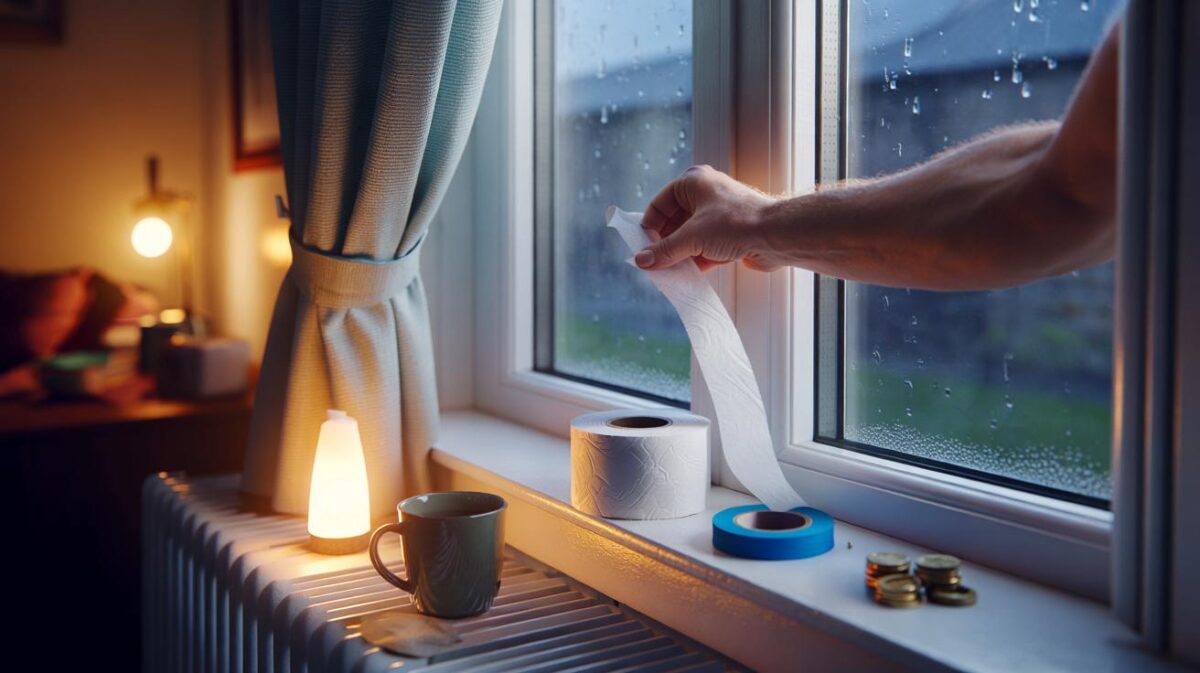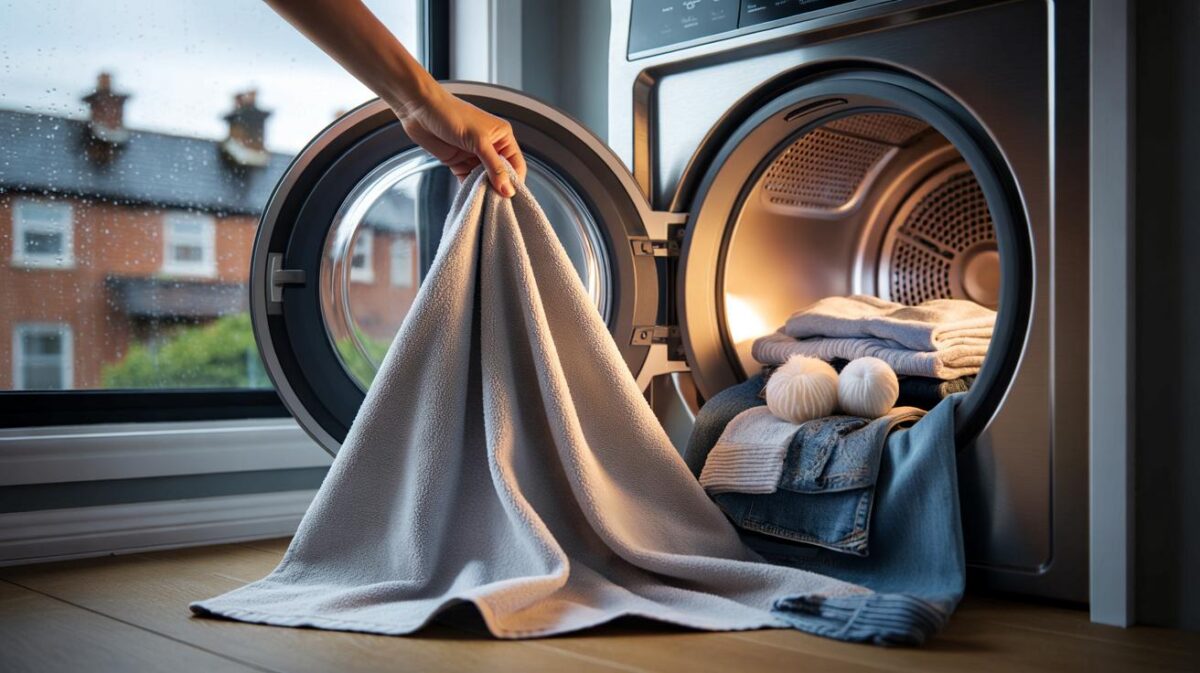Experts say a single tweak to your curtains can claw back up to £200 a year, simply by stopping your warmth from drifting out of the glass. The solution is hiding in plain sight.
The sun had slipped behind the terrace roofs and the room changed pitch. Kettle on, slippers on, and that quiet, creeping draught that seems to lick your ankles no matter what the thermostat says. A neighbour once told me to try heavier curtains and pull them early, so one damp Sunday I did—full-length, snug to the frame, closed at 4.10pm while the light still had a pulse. The radiator stopped roaring, the smart meter calmed, and the room took on that settled, pub-on-a-Tuesday glow. The trick was hanging there all along.
Why a curtain swap can mean £200 back in your pocket
Glass is the thinnest “wall” in your home, and warm air loves to race towards it. When it hits cold panes, that warmth sinks, pulling more heat into a slow, wasteful loop. A dense curtain with a proper lining slows that loop and traps a pocket of still air where you need it. Think of it like putting a lid on a simmering pot—less steam off, more heat in. That small change shifts the whole rhythm of a room.
In Leeds, the Lim family replaced light eyelet drapes with **thermally lined** curtains that run wall-to-wall and kiss the floor. They also moved the pole closer to the wall and overlapped the fabric past the frame. Within a week they nudged the thermostat down 1°C, and winter gas use fell by a tidy chunk on their smart meter. We’ve all lived that moment where the room feels warmer not because you cranked it, but because you stopped losing it. On a typical annual bill, that sort of cut can add up fast.
Here’s the logic behind the headline number. In many homes, space heating is the heavyweight—often the biggest share of the annual bill. Reduce heat loss through the largest cold surfaces by even 10–12% and you trim a meaningful slice from that total. Scale that across a few main windows, add a good top seal and side “returns”, and you can nudge into the “up to £200 a year” territory on a typical family bill. Not magic. Just physics and fabric, working in your favour.
Make this switch today: full-length, thermally lined, snug to the frame
The one change? Swap in thermally lined curtains that are wider and taller than you think you need. Aim for at least 20 cm overlap beyond each side of the window and a drop that skims the sill or the floor. Pick a header that seals—pencil-pleat or pinch-pleat—then bring the track closer to the wall and add “returns” that hook back. A simple pelmet or shelf at the top stops warm air racing behind the fabric. Close them early. That’s the habit that pays.
Common slip-ups are easy to fix. Eyelets can leave gaps, so if you love the look, add a discreet top baffle or a pelmet. Don’t let curtains drape over a radiator—tuck them behind or choose a shorter drop so the heat gets out. Bring the sides right to the wall and consider magnetic or Velcro strips for a tidy seal. Let’s be honest: nobody really does this every day. So pick solutions you’ll actually live with, not just pin on Pinterest.
Why this works is simple: less air moving over cold glass, less heat lost, more comfort for the same boiler setting. The effect multiplies when you add small extras like draught excluders and snug door curtains.
“Thick, well-fitted curtains act like a blanket for your windows—slow the air, trap the warmth, and the savings start to compound.”
- Go floor‑to‑ceiling where you can, and overlap the frame by 20 cm on each side.
- Add a pelmet or top shelf to block warm air from slipping behind.
- Use pencil-pleat headers and side returns for a tighter seal.
- Close at dusk, even on bright days. That’s when heat loss spikes.
Think beyond the window: little tweaks that stack up
Small changes tend to spread once you feel the difference. Pair curtains with a snug roller blind inside the recess for a double layer. Fit brush seals on the door, throw down a chunky rug over bare boards, and run a lined curtain across a draughty hallway arch. You’ll notice the house keeps a calmer temperature, and the boiler cycles less. It’s the quiet kind of comfort that lingers.
Small, quiet fixes often do the loudest work on your bills.
The bigger story here is control. When warmth stays in the room instead of feeding that endless, invisible draught, you stop chasing comfort with the thermostat. You close the curtains earlier, the living room settles, and you forget about the meter for an evening. The curtain swap becomes a habit that hums in the background, saving money while you get on with your life. Share it with a neighbour, and they’ll likely swear you’ve changed the boiler. You haven’t. You’ve changed the way your home holds heat.
| Point clé | Détail | Intérêt pour le lecteur |
|---|---|---|
| Thermally lined, full-size curtains | Overlap 20 cm each side; drop to sill or floor; track close to wall | Maximises the still‑air layer, reducing heat loss fast |
| Pelmets and side returns | Block warm air from travelling behind the fabric | Boosts the curtain’s “seal” for bigger, quicker savings |
| Close at dusk habit | Shut curtains before the temperature dive | Turns a one‑off purchase into year‑on‑year savings |
FAQ :
- Do thermal curtains really save money?Yes. By slowing air over cold glass, they cut heat loss, so rooms stay warm with fewer boiler cycles. Many households see a noticeable drop on winter usage.
- How does this reach £200 a year?Across several main windows, with good overlap, a pelmet and early closing, you can trim a solid share of space‑heating demand on a typical bill—often up to that level.
- What header style should I choose?Pencil‑pleat or pinch‑pleat seal better than eyelets. If you love eyelets, add a pelmet or top baffle to block the gap.
- Will curtains block my radiator?They can. Keep the fabric off the radiator or tuck behind a shallow shelf so heat flows into the room, not up the window.
- Are blinds enough on their own?Lined blinds help, but the best results come from layering: a snug blind inside the recess plus heavy, well‑fitted curtains outside.









